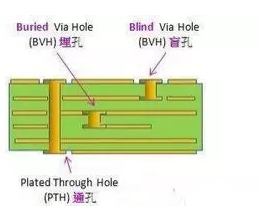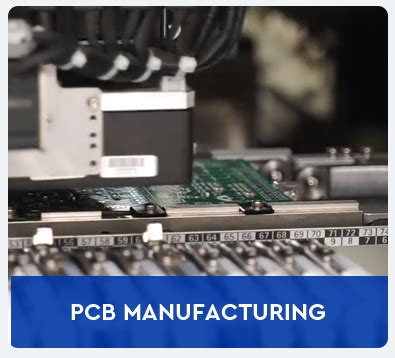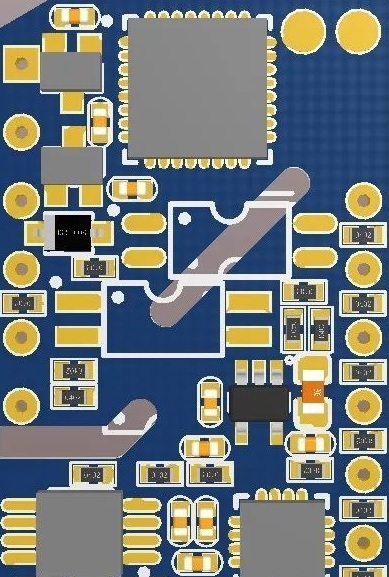Opportunities in Microwave Antenna PCB Technology: A Brief Analysis
Abstract
The rapid advancement of wireless communication technologies, including 5G, IoT, satellite communications, and radar systems, has significantly increased the demand for high-performance microwave antenna Printed Circuit Boards (PCBs). Microwave antenna PCBs play a crucial role in signal transmission and reception, requiring precise design, material selection, and manufacturing techniques. This paper explores the emerging opportunities in microwave antenna PCB technology, analyzing key trends, challenges, and future prospects in the industry.
1. Introduction
Microwave antenna PCBs are specialized circuit boards designed to operate at high frequencies, typically ranging from 1 GHz to 100 GHz. These PCBs are essential in modern telecommunication systems, aerospace, defense, and automotive radar applications. With the increasing adoption of 5G networks, autonomous vehicles, and satellite internet (e.g., Starlink), the demand for high-frequency, low-loss PCBs has surged.
This paper examines the key opportunities in microwave antenna PCB technology, focusing on material advancements, design innovations, manufacturing techniques, and emerging applications.

2. Key Opportunities in Microwave Antenna PCB Technology
2.1 Growth in 5G and mmWave Applications
The deployment of 5G networks requires PCBs capable of handling millimeter-wave (mmWave) frequencies (24 GHz to 100 GHz). Traditional FR-4 PCB materials are unsuitable for these frequencies due to high dielectric losses. Instead, high-frequency laminates like Rogers RO4000, PTFE (Teflon), and ceramic-filled composites are preferred.
Opportunities:
- Increased demand for low-loss, high-frequency PCB materials.
- Development of multi-layer PCBs with embedded antennas for compact 5G devices.
- Expansion of PCB manufacturing for small-cell and massive MIMO (Multiple Input Multiple Output) antennas.
2.2 Satellite Communication and Aerospace Applications
With the rise of low-Earth orbit (LEO) satellite constellations (e.g., SpaceX Starlink, OneWeb), microwave PCBs are critical for phased-array antennas and beamforming technologies. These applications require lightweight, high-reliability PCBs that can withstand extreme environmental conditions.
Opportunities:
- Use of advanced materials like polyimide and liquid crystal polymer (LCP) for flexible PCBs in satellite antennas.
- Integration of RF and digital circuits in a single PCB for reduced system complexity.
- Growth in demand for high-power handling PCBs in aerospace radar systems.
2.3 Automotive Radar and Autonomous Vehicles
Modern Advanced Driver Assistance Systems (ADAS) and autonomous vehicles rely on radar systems operating at 77 GHz and 79 GHz. These systems require high-precision PCBs with minimal signal distortion.
Opportunities:
- Adoption of high-frequency laminates (e.g., Rogers RT/duroid) for automotive radar PCBs.
- Miniaturization of antenna arrays using high-density interconnect (HDI) PCB technology.
- Increased collaboration between PCB manufacturers and automotive OEMs for customized solutions.
2.4 Internet of Things (IoT) and Smart Devices
The proliferation of IoT devices, including smart home systems, wearables, and industrial sensors, drives demand for compact, high-efficiency microwave antennas.
Opportunities:
- Development of flexible and stretchable PCBs for wearable antennas.
- Use of additive manufacturing (3D printing) for rapid prototyping of antenna PCBs.
- Integration of AI-driven optimization in PCB design for improved performance.
2.5 Defense and Military Applications
Military radar, electronic warfare, and communication systems rely on microwave PCBs for high-frequency signal processing. These applications require rugged, high-performance PCBs with secure supply chains.
Opportunities:
- Increased investment in domestically sourced PCB materials for defense applications.
- Development of conformal antennas for unmanned aerial vehicles (UAVs).
- Use of AI and machine learning for optimizing radar PCB designs.

3. Technological Advancements Driving Opportunities
3.1 Advanced PCB Materials
The choice of dielectric material significantly impacts PCB performance at microwave frequencies. Key material trends include:
- Low-Dk (Dielectric Constant) and Low-Loss Materials: PTFE-based laminates (e.g., Rogers RT/duroid) reduce signal loss.
- Ceramic-Filled Composites: Improve thermal stability for high-power applications.
- Flexible Substrates: LCP and polyimide enable bendable antennas for wearable and aerospace uses.
3.2 High-Density Interconnect (HDI) Technology
HDI PCBs allow for finer traces and tighter spacing, essential for mmWave antenna arrays. Benefits include:
- Reduced size and weight of microwave antennas.
- Improved signal integrity due to shorter interconnects.
- Enhanced integration of RF and digital components.
3.3 Additive Manufacturing and 3D Printing
3D-printed PCBs enable rapid prototyping and customization, reducing development time for new antenna designs.
3.4 AI and Machine Learning in PCB Design
AI-driven tools optimize antenna layouts, impedance matching, and signal integrity, leading to faster design cycles and improved performance.
4. Challenges and Considerations
Despite the opportunities, several challenges exist:
- High Material Costs: Specialty laminates (e.g., Rogers, Taconic) are expensive compared to FR-4.
- Manufacturing Complexity: Tight tolerances and high-frequency requirements demand advanced fabrication techniques.
- Thermal Management: High-power microwave PCBs require effective heat dissipation solutions.
- Supply Chain Risks: Geopolitical factors can disrupt the availability of critical PCB materials.
5. Future Outlook
The microwave antenna PCB market is expected to grow significantly, driven by 5G expansion, satellite internet, autonomous vehicles, and defense applications. Innovations in materials, manufacturing, and AI-driven design will further enhance PCB performance and reliability.
6. Conclusion
Microwave antenna PCBs are at the heart of modern wireless communication systems. The increasing demand for high-frequency, low-loss PCBs presents vast opportunities for manufacturers, material suppliers, and design engineers. By leveraging advanced materials, HDI technology, and AI-driven optimization, the industry can overcome current challenges and capitalize on emerging trends in telecommunications, aerospace, automotive, and IoT.






